Art World
That Lady Thing, San Francisco’s Latest Pop-Up Museum, Hopes to Turn ‘Selfie Feminism’ Into an Art-World Thing, Too
You can scale the "Corporate Climb" rock wall or cross the "Sea of Objectification."
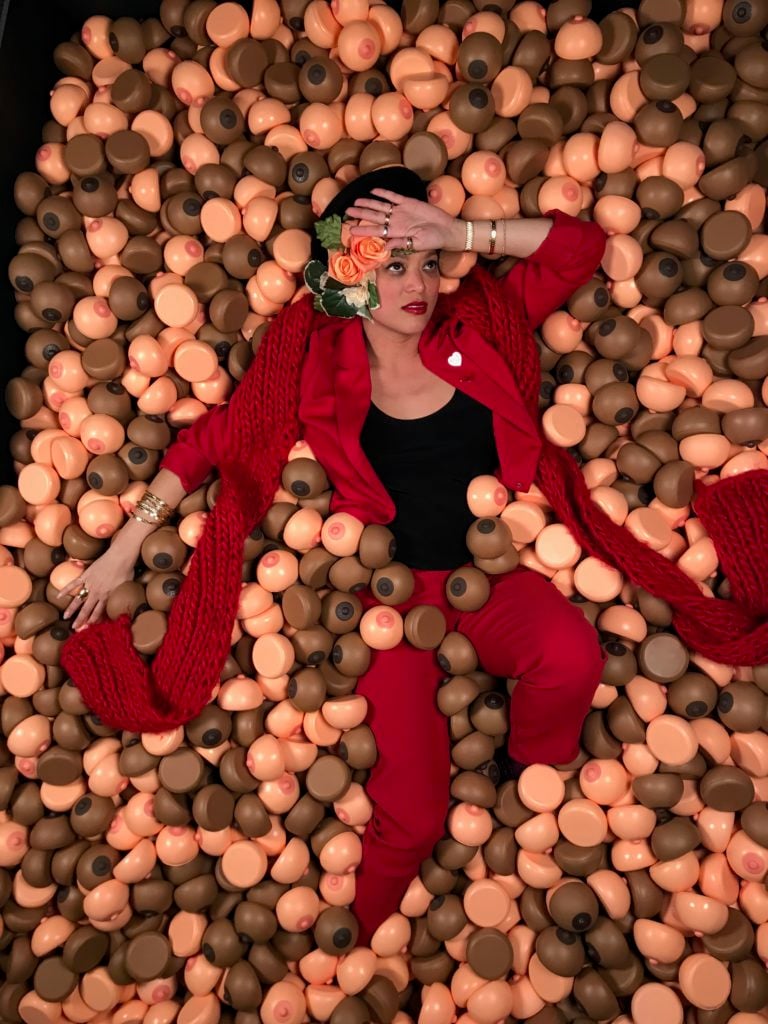
You can scale the "Corporate Climb" rock wall or cross the "Sea of Objectification."

Sarah Cascone

It seems almost inevitable that it would come to this: The latest addition to the world of Instagram-ready pop-up museums is That Lady Thing, which will transform the feminist struggle into a colorful, interactive playhouse rife with photo ops inspired by the pay gap, sexual harassment, and gender inequality.
Coming to San Francisco for five days in August, That Lady Thing is the brainchild of local creative agency Eleven, which originally staged the pop-up, then called the Lady Factory, as an International Women’s Day activation for friends and family back in March.
Pairing the visibility of women’s issues—which have made international headlines thanks to the Women’s March and the #MeToo movement—with the viral popularity of pop-up museums seems a recipe for garnering attention. But does reducing the pay gap to a colorful Instagram moment belittle the real challenges inherent in such important issues? Could this be the moment that feminism “jumps the shark,” so to speak?
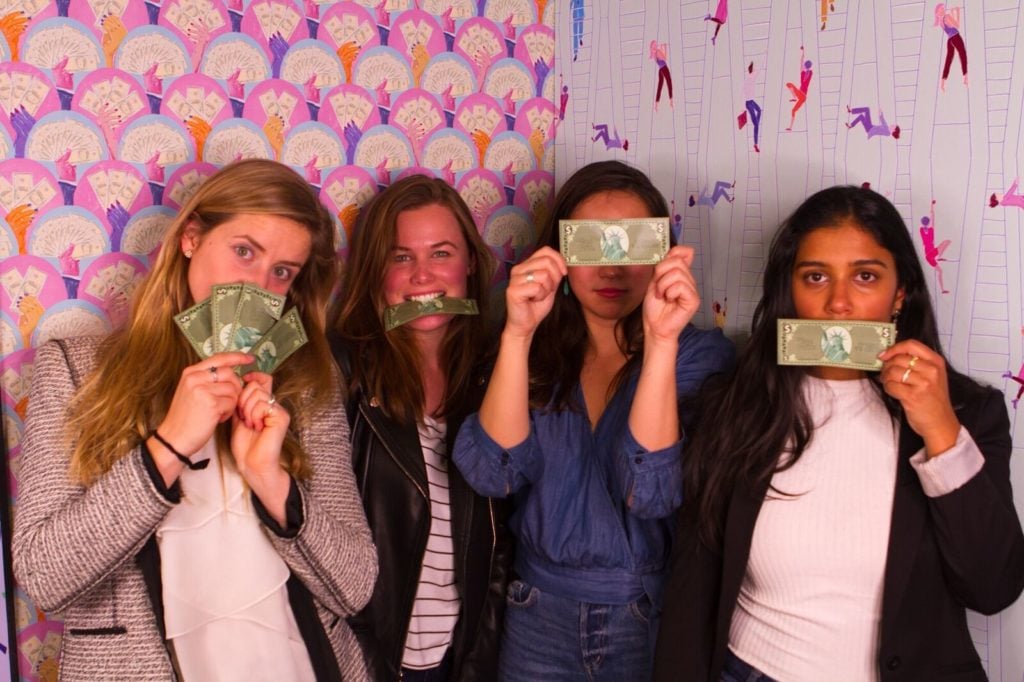
“The Money Maker” at the pop-up museum That Lady Thing. Photo courtesy of That Lady Thing.
“We’re well aware of how vapid selfie and pop-up culture is, and we’re kind of sending that up,” said Jamie Shaw, the company’s creative director, to artnet News. “I think that’s apparent when you look at and read what we’re doing, but surely some people are just going to see images and say ‘that is tone deaf.'”
After the March event, “we didn’t hear any backlash,” she added, noting that she hopes That Lady Thing can inspire visitors to demand raises or to speak up if they feel they are being subject to sexual harassment. “I was fully prepared for people to really grill us on what we were doing, but across the board, women were just elated by it.”
Admission to That Lady Thing is $25, but all the profits go toward women’s organizations, starting with the National Women’s Law Center. (Tickets also include a themed cocktail, cotton candy, popcorn, and goodie bags as a parting gift.)
The Eleven team spent just 12 days on the original Lady Factory, designing feminist-themed wallpapers and three “experiences,” including, of course, a ball pit, the staple of any good pop-up museum. That Lady Thing boasts a boob ball pit, christened “The Sea of Objectification,” or the tit pit for short.
https://www.instagram.com/p/BloUZ4shUHh/
You can also tackle “The Corporate Climb” rock wall, aiming to reach new heights in your career, and rake in some “cash”—there are only fake dollar bills to be had—in “The Money Maker,” a commentary on the wage gap between men and women.
It remains to be seen if That Lady Thing can replicate the success of similar outfits such as the Museum of Ice Cream, the Color Factory, and Refinery29’s 29Rooms—which incorporated activist themes at its last New York outing—but there are already plans in the works to bring the show on the road to New York and Los Angeles.
“The response from women, press, and brands wanting to come to this fictional place we’d made up was overwhelming,” said Shaw of the success of the International Women’s Day event.
The first outing was a DIY affair inside the Eleven offices, but Shaw and her team are building the second iteration with an eye toward taking the show on the road. They’ve teamed with two Instagram-based artists, @lucialitman and @bloodygirlgang, to add two new wallpapers, and hope to add additional installations each time they visit a new city.
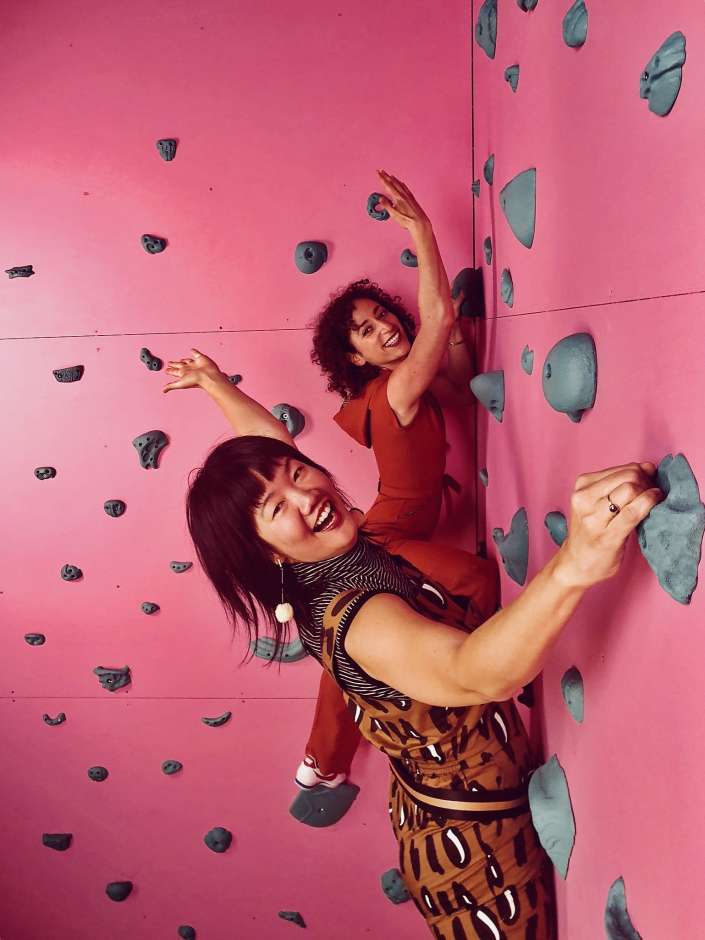
“The Corporate Climb” at the pop-up museum That Lady Thing. Photo courtesy of That Lady Thing.
“I hope to do more collaborations so that women designers and makers wherever they live can submit ideas to us,” Shaw said. “That way we can represent lots of voices.” She also hopes to add educational programming, such as wage negotiation workshops and women investment advisory meetings, and to create a version geared specifically toward girls and teens. (Because of the venue, next month’s event is strictly 21 and over.)
Tickets are already on sale, and feature the staggered admission times typical of pop-up museums. Each day’s capacity is 700 visitors, for 3,500 total tickets for That Lady Thing’s five-day run.
We talked with Shaw over email about the project’s inspiration, the pop-up museum phenomena, and what she’d say to those who’d accuse her of capitalizing on feminism’s trendiness.
What did you learn from other pop-up museum experiences such as 29Rooms, the Museum of Ice Cream, and the Color Factory that helped you design That Lady Thing?
Well, to be clear, we didn’t set out to make a pop-up museum. We set out to design an activation for International Women’s Day, and we spent a couple days brainstorming everything from useful apps to public art installations or stunts like women climbing the sides of buildings downtown.
In the process, we asked ourselves, how do we get noticed with all the energy on International Women’s Day? How do we get people to look up from their Instagram feeds? So that was it: Let’s go where they’re already looking. Why not embed ourselves in that space and leverage that behavior?
It’s fair to say that we were sending up selfie culture and Instagram “museums.” They exist for photo moments, not for communicating important messages, so we wondered what would happen when you collided those two things.
I hadn’t been to any of those installations when we had the idea; I’d just seen them all over my feed. After we decided to become real, I visited the Museum of Ice Cream, which was utterly delightful with impressive production value. I also visited 29Rooms, which was puzzling to me. There wasn’t a through-line narrative, but rather a collection of rooms—each with a statement developed by brands or celebrities. I have to say, it was a head-scratcher to me. I didn’t leave with any sense of story, so it felt soulless. No disrespect; it just didn’t feel like there was any “there” there.
Why do you think pop-up museum experiences are so popular right now, and why do you think a feminist-themed one will be popular?
I’m less jaded about them than many others. Obviously, the popularity is partially about the selfies and creating FOMO. But in a more pure way, these pop-ups give everyone access to imaginative, fantastical environments.
I work in branding and experience design, so I’m lucky enough to dream up, make, and shoot cool things. But for people who don’t live in a creative environment all the time, it’s a little bit of magic. That’s how I see them anyway.
I hope That Lady Thing will be popular because people will pick up on the tongue-in-cheekiness of it. We put a great deal of care into coming up with visual metaphors for gender bias and naming them to signal the societal problem. There’s something interesting about addressing this substance in a wrapper that masquerades as being vapid. We’re simultaneously making an activist statement and commenting on the pop-up phenomenon.
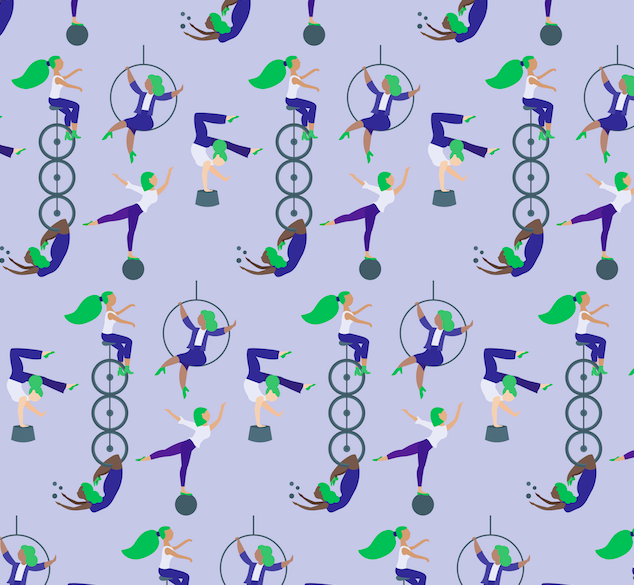
Adriana Del Mar, Hoops wallpaper for That Lady Thing. Image courtesy of That Lady Thing.
Do you think there is an inherent risk in representing feminist issues like the glass ceiling with light-hearted interactive activities like the “Corporate Climb” rock wall?
I know some people will see it that way. It’s important to say that we ourselves are reacting to the current trend of using feminism as a hook—on t-shirts, in pink glittery events that call themselves feminist gatherings but revolve around shopping and beauty products. We are actually commenting on that lack of depth by making a selfie pop-up to take on issues like harassment.
I don’t think we’re reducing the issues, but bringing them into an unexpected space: Instagram feeds. Feminism has always lived in the academy, the gallery, the street protest. How do we have these conversations in spaces where women spend most of their time?
I think the fact that we’re colorful and creative should be a strength, not a shortcoming. Especially because there’s a generation and a faction of women who still think “feminist” means something scary: something humorless and bitter that they’ve been told is unbecoming.
We wanted to show that we can make these arguments in a space that’s magnetic, pleasing, inviting—something people want to align themselves with. In no way are we dumbing down the content—more like taking rogue action to insert it into an unsuspecting sphere.
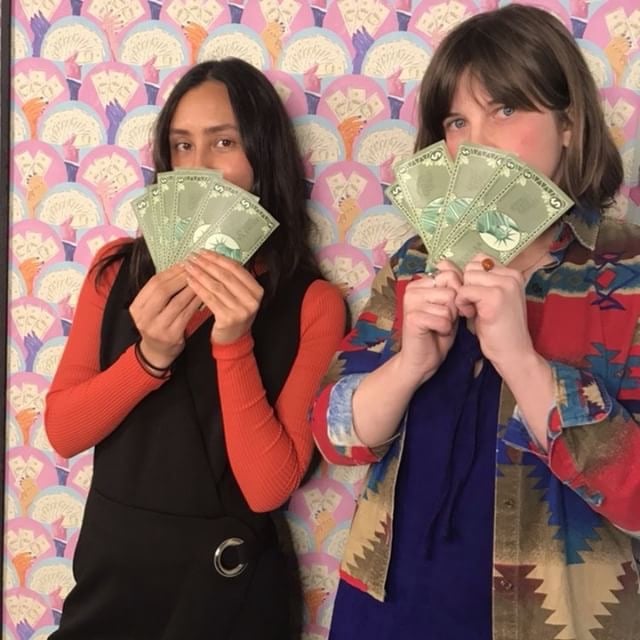
“The Money Gap” at the pop-up museum That Lady Thing. Photo courtesy of That Lady Thing.
Was it difficult to strike the right balance of playful and serious/educational when tackling feminist issues? Did you ever worry that That Lady Thing might come across as if it were just looking to capitalize on the #MeToo moment?
Yes. And there will be plenty of people who say we didn’t do a good job. Some people will say feminism is a sacred cow and how dare we make visual puns about these issues.
I think there’s power in creative social commentary, and I think it’s problematic when some feminists declare others less correct in their approach. It’s part of the reason some women are afraid of the concept because they don’t feel welcome.
Not every woman can hold forth on second-wave feminism or Simone de Beauvoir. But they understand that they get paid less, and they’re angry about it. If we can talk about these issues in ways that don’t alienate people, we can reach a lot of people who might not otherwise engage.
We are covering our costs through ticket sales and sponsorships from companies that do right by women. And we’re raising money for women’s organizations, starting with the National Women’s Law Center. We are simply making a creative statement and trying to make a difference through our fundraising.
We’re not purporting to be NOW or The Women’s March. We’re a group of creative women who made something we’re proud of and judging by the response from the women who’ve interacted with it, we’re doing something right.
The boob ball pit looks a little like the Bompas & Parr boob bouncy castle, Jump for Joy, at New York’s Museum of Sex; were they involved at all?
I’m familiar with Bompas & Parr’s alcoholic architecture and the jellies, but I didn’t know about the boob bouncy castle. They were not involved in this project, but the idea that they could have been is quite a compliment, indeed!
That Lady Thing will be on view at 119 Utah Street, San Francisco, August 5–9, 2018. Tickets cost $25 and are available here.